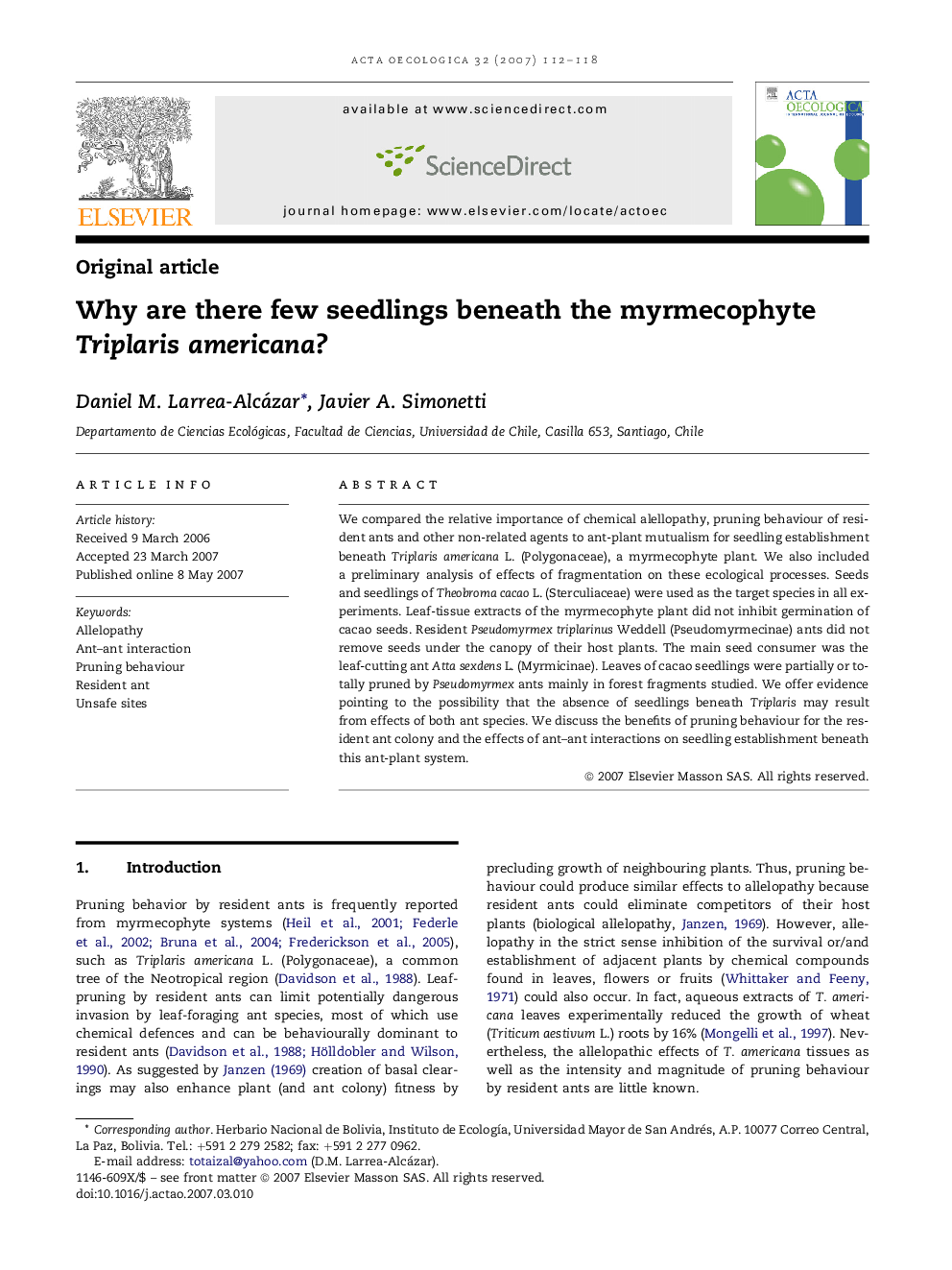| Article ID | Journal | Published Year | Pages | File Type |
|---|---|---|---|---|
| 4381623 | Acta Oecologica | 2007 | 7 Pages |
We compared the relative importance of chemical alellopathy, pruning behaviour of resident ants and other non-related agents to ant-plant mutualism for seedling establishment beneath Triplaris americana L. (Polygonaceae), a myrmecophyte plant. We also included a preliminary analysis of effects of fragmentation on these ecological processes. Seeds and seedlings of Theobroma cacao L. (Sterculiaceae) were used as the target species in all experiments. Leaf-tissue extracts of the myrmecophyte plant did not inhibit germination of cacao seeds. Resident Pseudomyrmex triplarinus Weddell (Pseudomyrmecinae) ants did not remove seeds under the canopy of their host plants. The main seed consumer was the leaf-cutting ant Atta sexdens L. (Myrmicinae). Leaves of cacao seedlings were partially or totally pruned by Pseudomyrmex ants mainly in forest fragments studied. We offer evidence pointing to the possibility that the absence of seedlings beneath Triplaris may result from effects of both ant species. We discuss the benefits of pruning behaviour for the resident ant colony and the effects of ant–ant interactions on seedling establishment beneath this ant-plant system.
